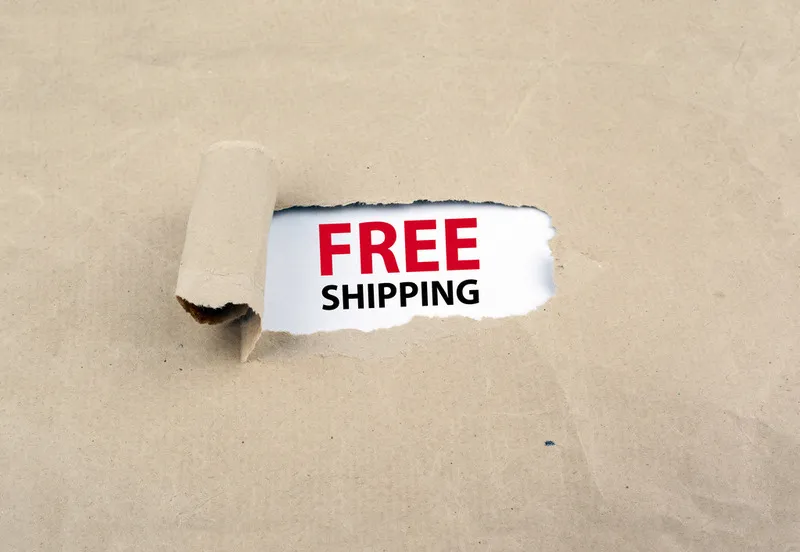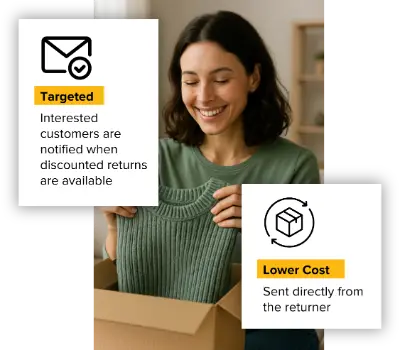How To Offer Free Shipping on Your Ecommerce Store & Still Make a Profit

Last updated on March 14, 2025

In this article
 3 minutes
3 minutes
- Top 12 Shipping Strategies For Making Free Shipping Profitable
- Top 5 Pricing Strategies For Making Free Shipping Profitable
- Top 8 Marketing Strategies For Making Free Shipping Profitable
- Top 7 Supply Chain Strategies For Making Free Shipping Profitable
- Top 7 Returns Optimization Strategies For Making Free Shipping Profitable
For any online Seller wanting to get ahead of the pack, offering fast and free shipping is a must. But shipping is not really free, is it? And it can creep into your margins. We have created THE ultimate guide on how to offer free shipping and still make a profit. Keep reading to learn nearly 40 proven ways you can offer free shipping profitably and radically improve your bottom line.
Top 12 Shipping Strategies For Making Free Shipping Profitable
Free shipping has evolved from a bonus perk to an expectation among online shoppers. But for businesses, it presents a major challenge—how do you cover shipping costs without eating into your profit margins? The answer lies in smart logistics and strategic planning. By negotiating better rates, optimizing fulfillment processes, and leveraging hybrid shipping solutions, you can offer free shipping while still protecting your bottom line. This guide explores strategic shipping best practices for turning free shipping from a costly obligation into a competitive advantage, ensuring both customer satisfaction and long-term business sustainability.
Read more.
Top 5 Pricing Strategies For Making Free Shipping Profitable
Pricing plays a critical role in both conversion rates and profitability, and when it comes to free shipping, it’s essential to strike the right balance. Simply absorbing shipping costs without adjusting your pricing model can lead to financial strain. Instead, businesses need to strategically incorporate shipping expenses into their pricing structure—whether through slight price adjustments, minimum order thresholds, or dynamic pricing models. This article breaks down five proven pricing strategies that help businesses recover shipping costs while remaining competitive, ensuring that free shipping enhances rather than erodes profitability.
Read more.
Top 8 Marketing Strategies For Making Free Shipping Profitable
Free shipping is a powerful marketing tool that can boost conversions, build customer loyalty, and increase average order value. However, if not executed strategically, it can also lead to shrinking margins. The key is to use free shipping as a lever to drive sales, whether through limited-time promotions, loyalty programs, or strategic bundling. This article explores eight marketing strategies that not only make free shipping sustainable but also turn it into a growth engine for your business. If you’re looking for ways to attract customers and keep them coming back without compromising profitability, this is the guide for you.
Read more.
Slash Your Fulfillment Costs by Up to 30%
Cut shipping expenses by 30% and boost profit with Cahoot's AI-optimized fulfillment services and modern tech —no overheads and no humans required!
I'm Interested in Saving Time and MoneyTop 7 Supply Chain Strategies For Making Free Shipping Profitable
Behind every successful free shipping program is a well-optimized supply chain. Whether it’s managing inventory more efficiently, leveraging regional fulfillment centers, or adopting dropshipping as part of your operating model, businesses that refine their logistics can reduce costs and make free shipping a feasible, profitable option. This guide takes a deep dive into seven key supply chain strategies that help ecommerce sellers minimize expenses while still offering fast and affordable shipping. If you want to turn free shipping from a financial drain into a business advantage, these supply chain optimizations are a must-read.
Read more.
Top 7 Returns Optimization Strategies For Making Free Shipping Profitable
Returns are a natural part of ecommerce, but without the right strategy, they can quickly become a financial burden. The good news is that returns optimization can help businesses reduce unnecessary refunds, streamline reverse logistics, and even recover revenue. Whether it’s improving product descriptions to prevent returns, offering in-store drop-offs, or leveraging ecommerce programs, this guide outlines seven actionable strategies that make free shipping sustainable by keeping your returns program cost-effective. If returns are eating into your margins, these strategies will help you regain control.
Read more.

Turn Returns Into New Revenue


